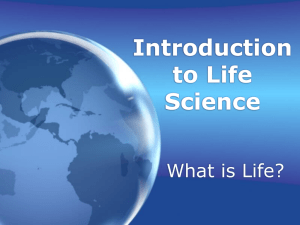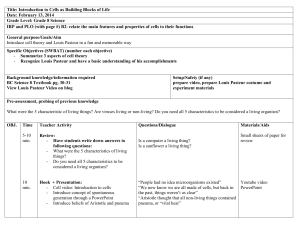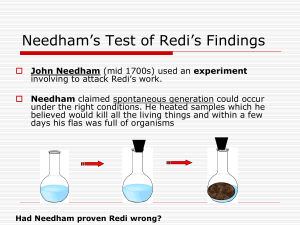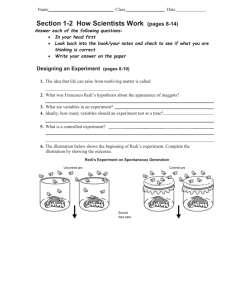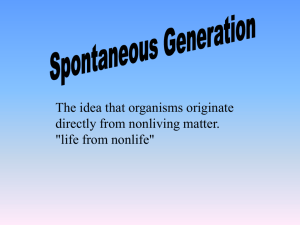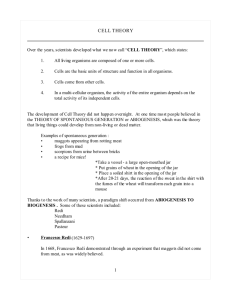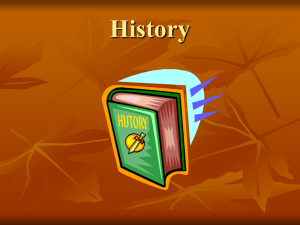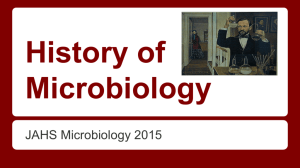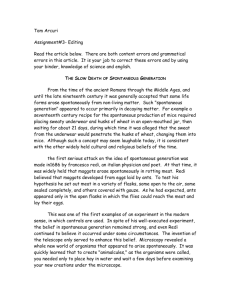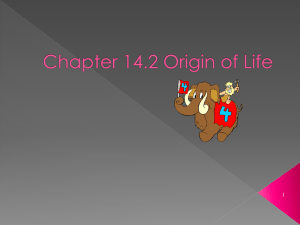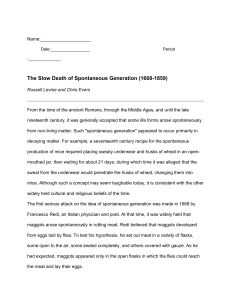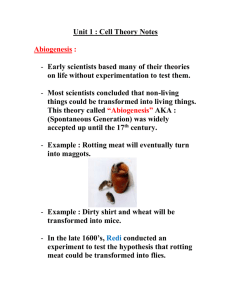File
advertisement
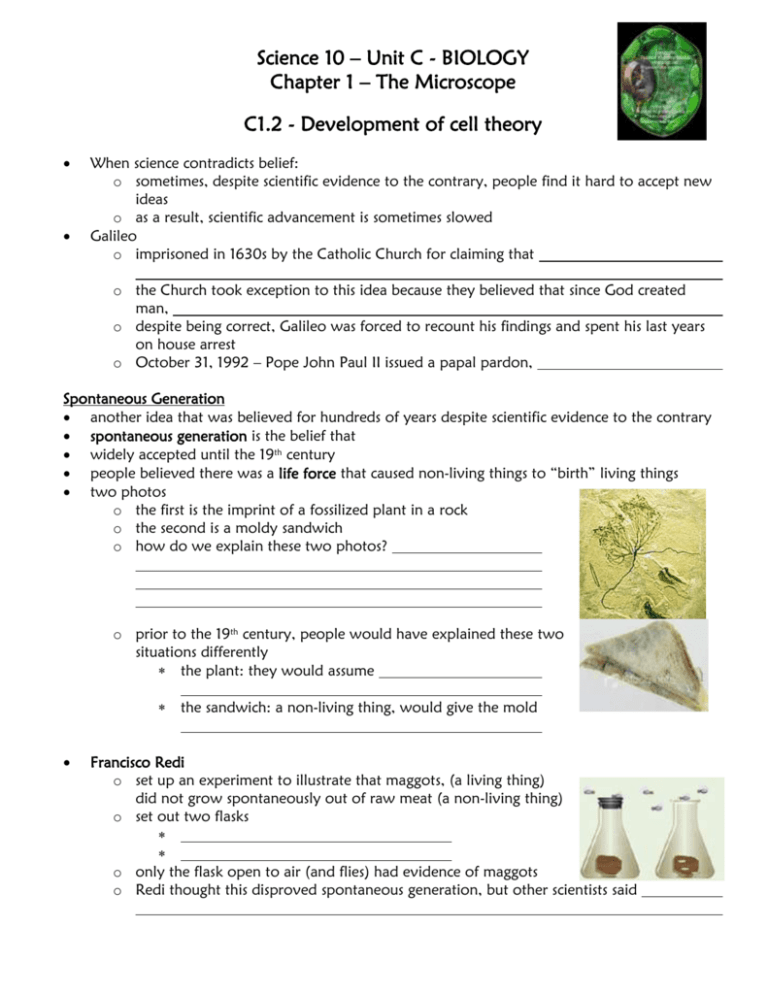
Science 10 – Unit C - BIOLOGY Chapter 1 – The Microscope C1.2 - Development of cell theory When science contradicts belief: o sometimes, despite scientific evidence to the contrary, people find it hard to accept new ideas o as a result, scientific advancement is sometimes slowed Galileo o imprisoned in 1630s by the Catholic Church for claiming that o the Church took exception to this idea because they believed that since God created man, o despite being correct, Galileo was forced to recount his findings and spent his last years on house arrest o October 31, 1992 – Pope John Paul II issued a papal pardon, Spontaneous Generation another idea that was believed for hundreds of years despite scientific evidence to the contrary spontaneous generation is the belief that widely accepted until the 19th century people believed there was a life force that caused non-living things to “birth” living things two photos o the first is the imprint of a fossilized plant in a rock o the second is a moldy sandwich o how do we explain these two photos? o prior to the 19th century, people would have explained these two situations differently the plant: they would assume the sandwich: a non-living thing, would give the mold Francisco Redi o set up an experiment to illustrate that maggots, (a living thing) did not grow spontaneously out of raw meat (a non-living thing) o set out two flasks o only the flask open to air (and flies) had evidence of maggots o Redi thought this disproved spontaneous generation, but other scientists said John Needham o performed another experiment, and claimed that o boiled chicken broth (to kill bacteria) o put it in a sealed flask o found that likely because broth wasn’t heated Lazzaro Spallanzani o repeated Needham’s experiment, but in a vacuum o this removed o no microorganisms appeared o despite this evidence, Needham still maintained this only proved Louis Pasteur o his experiment in 1864 was finally the decisive proof the scientific community needed o Pasteur set up two flasks, each with the same meat broth he heated them both to sterilize them the flasks he used had bent necks, so that they were initially, neither broth became cloudy with microbial growth o In experiment 1, Pasteur broke off the neck of the flask, dust now had access to flask 1, while it got trapped in the neck of flask 2 over time, microorganisms o this proved that microorganisms are not generated by the broth, but rather Experimental variables whenever performing an experiment, a scientist must decided what he or she is testing for o some variables will change from trial to trial, o some variables will stay the same so the scientist knows that Manipulated variable o the variable that o in Pasteur’s experiment, the manipulated variable was Responding variable o the responding variable is o in Pasteur’s experiment, the responding variable was Controlled variables o the controls are o in Pasteur’s experiment, the controls were: Practice problems o In each of the experiments described below, identify the manipulated, responding, and at least two controlled variables: a science student wants to know if the amount of water given to a plant affects how tall it will grow M: R: C: a pharmaceutical company wants to know if a new drug is effective in treating migraines M: R: C: a car company wants to know if the type of brake pads in a car affects stopping distance M: R: C: Cell theory Robert Brown o with improvements in lens technology came a new understanding of the cell o in 1833, identified the nucleus of the cell as Schleiden & Schwann o made observations on plant and animal cells o together, proposed that o described cells as Rudolf Virchow o expanded on Schleiden and Schwann’s theories on cells o theorized that all cells arise only from pre-existing cells Summary of cell theory o all living things are made up of one or more cells and o all life functions take place in cells, making them o all cells are produced from pre-existing cells Homework: Check and Reflect page 252 #2-4 Make a list of the scientists from sections C1.1 and 1.2 with one or two points on their contribution to science
